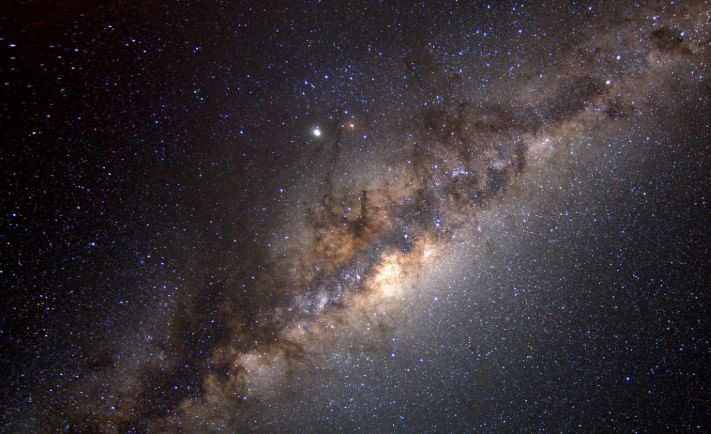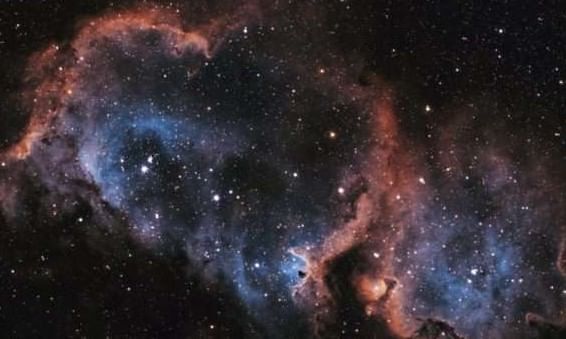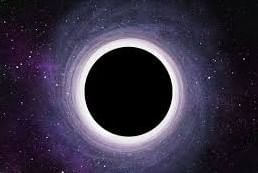Our Galaxy – The Milky Way | General Knowledge for Young Learners - Class 1 PDF Download
| Table of contents |

|
| What is the Milky Way? |

|
| Stars in the Milky Way |

|
| Nebulae — the clouds of the galaxy |

|
| Black holes in the Milky Way |

|
| Examples & interesting facts |

|
What is the Milky Way?
The Milky Way is the galaxy that contains our Solar System. From Earth it looks like a faint band of light across the night sky made of billions of distant stars.
- Shape and structure: It is a barred spiral galaxy — a flat rotating disk with spiral arms, a central bulge (thick cluster of stars), and a spherical halo of older stars and star clusters. Infrared observations show the Milky Way’s disk and bar shape, with several spiral arms where many stars and star-forming clouds lie.
- Size and contents: The Milky Way’s visible disk is roughly 100,000–200,000 light-years across (different methods give slightly different numbers). It contains an estimated 100–400 billion stars and at least as many planets. Our Sun sits about ~27,000 light-years from the Galactic Center, inside a minor arm called the Orion (or Local) Arm.
How active is it?
The galaxy forms new stars at a rate of about 1–3 solar masses per year (estimates vary by method; a commonly cited average is ~1.5–2 M☉/yr). That means a handful of new stars (mostly small ones) are born each year across the whole galaxy.
Stars in the Milky Way
What stars are
- Definition: Stars are huge balls of hot gas (mainly hydrogen and helium) where nuclear fusion produces light and energy.
- How many & what kinds: The Milky Way contains billions of stars of many types: hot blue giants, yellow suns (like ours), cooler red dwarfs (the most common), and old, faint white dwarfs and neutron stars. Stars are often grouped in clusters or associations. Wikipedia
Star life cycle (simple)
- Cloud → Proto-star: Stars form inside dense regions of gas and dust (molecular clouds). Gravity pulls matter together to make a protostar.
- Main sequence: When core temperature is hot enough, hydrogen fusion begins — the star spends most of its life like this (our Sun is a main sequence star).
- Giant and death: Depending on mass, the star becomes a red giant or supergiant, and then ends as a white dwarf, neutron star, or black hole. Massive stars explode as supernovae and spread heavy elements into space.
Where new stars form
Star formation regions are mostly in the spiral arms and inside giant molecular clouds. Famous examples in the Milky Way include the Orion Nebula and the Eagle Nebula (the “Pillars of Creation”), where new stars can be seen forming.
Nebulae — the clouds of the galaxy

What nebulae are
Definition: Nebulae are large clouds of gas and dust in space. The word “nebula” originally meant “cloud.” They come in several types and play two main roles in the life of stars.
Main types (simple)
- Emission nebulae: Gas (usually hydrogen) glows because nearby hot stars ionize it (e.g., Orion Nebula).
- Reflection nebulae: Dust reflects starlight; they look bluish because dust scatters shorter (bluer) wavelengths more effectively.
- Dark nebulae: Dense dust blocks background starlight and appears as dark patches (e.g., the Horsehead Nebula).
- Planetary nebulae: Shells of gas ejected by medium-mass stars near the end of their lives (they are not related to planets).
Role in star life cycle
- Stellar nurseries: Nebulae (especially molecular clouds) are where gravity collects gas and dust to make new stars.
- Remnants: Nebulae can also be leftover shells from dying stars or the debris from supernova explosions.
Black holes in the Milky Way

Types of black holes
- Stellar-mass black holes: Form when very massive stars collapse at end of life (a few to tens of solar masses). Many exist throughout the galaxy but are hard to spot unless they’re interacting with a nearby star.
- Intermediate-mass black holes (possible): Heavier than stellar black holes but lighter than supermassive ones; astronomers are actively searching for and studying candidates. Recent studies suggest some star clusters and merger remnants may host intermediate-mass black holes.
The supermassive black hole at the center — Sagittarius A*
At the heart of the Milky Way lies Sagittarius A* (Sgr A*), a compact radio source identified as a supermassive black hole. Its mass is about 4.1 million times the mass of the Sun and it sits ~26,000–27,000 light-years from us (in the constellation Sagittarius). In 2022 the Event Horizon Telescope collaboration released the first resolved radio image of the region close to its event horizon. Recent observations also revealed an organized magnetic field around Sgr A*.
Why black holes matter for the galaxy
Supermassive black holes influence the center of a galaxy through gravity and by shaping gas flows. Stellar black holes and supernovae contribute to the chemical evolution of the galaxy by returning heavy elements to the gas that forms new stars.
Examples & interesting facts
- Orion Nebula (M42): One of the nearest massive star-forming regions; visible to the naked eye as part of Orion’s sword. (Nebula example.)
- Sagittarius A* image: Imaged by the Event Horizon Telescope; the bright ring is emission from hot gas near the black hole’s event horizon. (Black hole example.)
- How many stars form per year? Estimates vary: many studies give a global star-formation rate near ~1–2 M☉ per year, meaning only a few new stars (by number) are born each year in the whole galaxy — most are low-mass stars. Different methods and surveys can give numbers a bit higher or lower.
|
64 videos|153 docs|40 tests
|
FAQs on Our Galaxy – The Milky Way - General Knowledge for Young Learners - Class 1
| 1. What is the Milky Way galaxy? |  |
| 2. How many stars are there in the Milky Way? |  |
| 3. What are nebulae, and how do they relate to the Milky Way? |  |
| 4. Are there black holes in the Milky Way? |  |
| 5. What are some interesting facts about the Milky Way? |  |




















